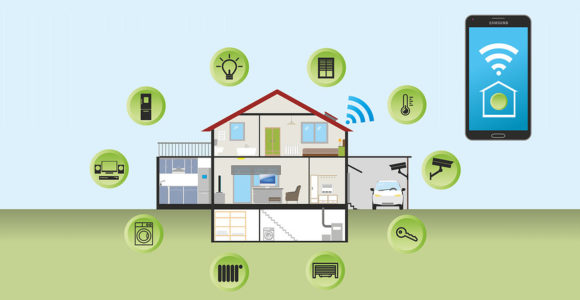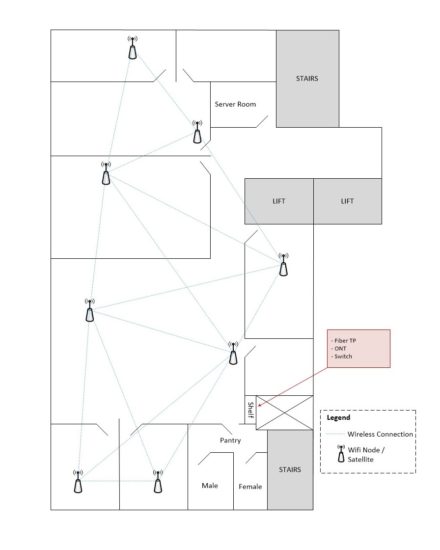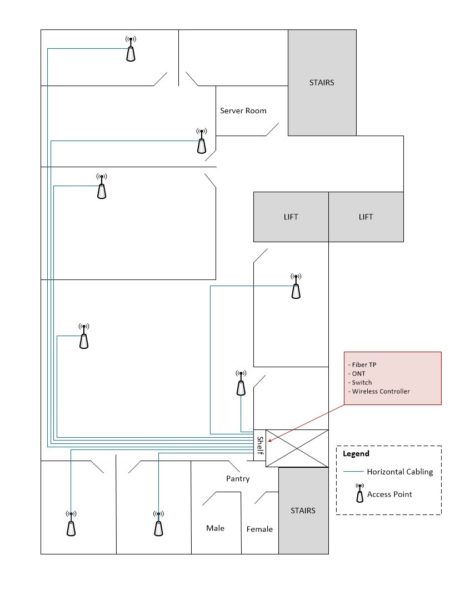
Wireless LANs or more commonly known as Wi-Fi has become increasingly popular. They are now literally everywhere and nowadays having ended up in a place with no Wi-Fi could be one of life’s biggest issues. They are easy to install and use especially for indoor places such as homes, school, offices, cafes, malls etc. You can even connect your Wi-Fi to your Internet Gateway and provide Internet connection for users. That is just superb! Especially now with the emergence of smart devices, Wi-Fi gives users the ability to move around within the area and yet still be “connected”. You can simply stay “connected” on your smartphones, digital audio players or tablets while enjoying a nice cup coffee at a café or going from levels to levels in an office building. Wi-Fi has make life becomes so much more easier.

With the new technology trend of “Smart Homes”, compatible devices can easily connect to each other over Wi-Fi and also access the Internet. Building up a smart home can be made easy with Wi-Fi. It will virtually allow every electronic device in your home including your lighting, aircon system, entertainment system, security system, door access control and even appliances to be linked to your home network.
There are handful Wi-Fi technologies available to implement but we will just focus on the 2 most popular ones in this article. These two are the Wi-Fi Mesh and the Wi-Fi Access Points (AP).
Wi-Fi Mesh
A Wi-Fi Mesh Network is a communications network made up of a main router that connects directly to your modem, and a series of satellite modules or radio nodes organized in a mesh topology in your home or a particular location for full wireless coverage. It is also a form of wireless ad hoc network. They are all part of a single wireless network and share the same SSID and password, unlike traditional Wi-Fi routers.
A modular mesh whole home Wi-Fi system is flexible and scalable, giving you a customizable method of expanding your Wi-Fi without the need to add range extenders, which have performance and ease-of-use issues. It’s just like installing lighting fixtures to illuminate your home; you can place your nodes anywhere in your home. You choose which rooms need the coverage, and when it’s time to add more to extend the signal even further.

The name “mesh network” itself implies that every component of your WiFi system is working together, and seamless roaming is a perfect example of that. When you use a router and range extender combination, you have to switch between the networks manually as you move from one coverage zone to the other.
But with seamless roaming, you only have one network with one name and password—that means that as you move about your home, you’ll never have to manually switch from one network to the other. So go ahead, stream video in the living, kitchen, or bedroom without worrying about buffering or a dropped connection. One advantage of mesh networks is that they are “self-healing.” If one of the devices that make up the network is down, the network will discover and use the fastest way to deliver the signal. This is because the individual hubs are connected in a mesh-based manner as opposed to a linear one.
Wi-Fi Access Points (WAP)
Just like Wi-Fi Mesh, an access point is a device that creates also a Wireless Local Area Network (WLAN). However, An access point connects using a physical data cabling (Ethernet Cable) wired to a router, switch, or hub, and projects a Wi-Fi signal to a designated area. For example, if you want to enable Wi-Fi access in your company’s reception area but don’t have a router within range, you can install an access point near the front desk and run an Ethernet cable through the ceiling back to the server room. At the backend, a typical AP system will have a will have a Wireless Controller (WC), which acts as the brain for the whole AP system. Wireless Access Point Networks are normally used in commercial setups, that it’s only job is to be basically a Wifi switch, take a LAN connection and allow it be accessed by wireless devices. A good WAP can handle over 250 simultaneous connections each hence WAP give you the freedom to be highly scalability on the number of devices connected on your network.
Another big advantages of installing WAP is that connected users can also roam freely from room to room while having seamless and uninterrupted network interruptions. As they move through the building, their devices shift seamlessly from one access point to the next without dropping the connection—they won’t even realize they’re switching between networks.
Since WAP can be installed using Ethernet cable, so there is no need to run a separate power line or install an outlet near the access point for some model of the WAP which is PoE+ (a combination Ethernet and power cord) supported.
Additional standard features include Captive Portal and Access Control List (ACL) support, so you can limit guest access without compromising network security, as well as easily manage users within your Wi-Fi network. Select access points include a Clustering feature—a single point from which the IT administrator can view, deploy, configure, and secure a Wi-Fi network as a single entity rather than a series of separate access point configurations.

Installation of a network of wireless access is not so straightforward hence, will likely require a professional to do the job. One great advantage of a WAP is that any future issues that arise with the device may be able to be managed by accessing the device remotely–without a technician needing to visit your home or office. WAPs must be configured properly, and will need fine tuning, so for this reason, it’s best left to a professional.

Conclusion
Choosing between a wireless access point and a mesh network may come down to budget and their ease of installation, speed or performance you’re hoping to achieve and also the number of devices you will be connecting to the network. A Business grade WAP can take connections up to over 250 devices and highly scalable, Wi-Fi Mesh may not be able to do so. While theoretically a Mesh hub can handle over 200 devices but it all depends on the capacity and processing power of the device. Typically Wi-Fi Mesh are not designed to be as powerful as WAP, which explains why WAP easily cost more. A WAP is a more straightforward device that acts as a bridge, directly linking your router to your devices, but it does require more attention and tweaking. The fact that it is hardwired may seem like a disadvantage (especially for home setup), where salesperson tells us wireless equates easy setup. But a WAP doesn’t have to hop from one node to another like in a mesh network, thus slowing the signal down and potentially hindering reliability, two things you really don’t want from your network.
It is critical while designing your wireless network that all blind spots are covered to ensure smooth and seamless connectivity. Pegasus Insys recognizes the importance of setting up a wireless network which will optimize your connectivity right from the start.
Partner with us today to build your wireless network initiatives, be it at your home, office, retail or anywhere. We have vast amount of experience and are always up-to-date on the current networking trends.
WHAT ARE YOU WAITING FOR…


